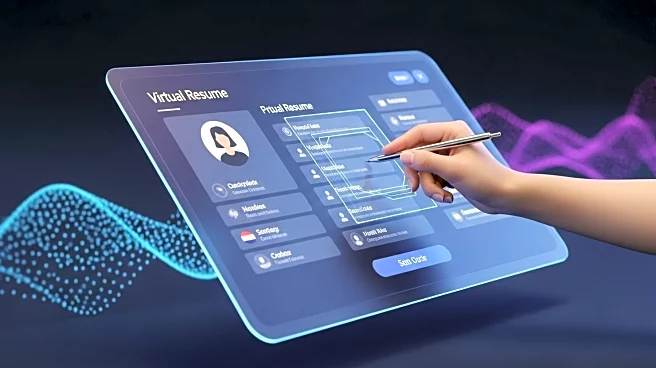What's Happening?
HR leaders are increasingly adopting AI-powered tools to enhance workforce productivity. According to Neal Woolrich, HR leaders are now expected to integrate both human and technological capabilities to improve organizational effectiveness. Despite significant investments in technology, many HR leaders face challenges in delivering solutions that effectively boost employee productivity. To address this, they are experimenting with 'nudgetech,' a set of AI tools that combine behavioral science with real-time data to elicit positive changes in employee behavior. This approach aims to overcome communication barriers and improve team dynamics by prompting employees to choose appropriate communication channels and educating managers about their team's preferred working styles.
Why It's Important?
The integration of AI tools in HR practices is significant as it represents a shift towards more data-driven and personalized approaches to workforce management. By addressing behavioral barriers to productivity, organizations can achieve measurable gains in employee performance and engagement. This development is crucial for businesses aiming to remain competitive in a rapidly evolving technological landscape. The successful implementation of these tools can lead to improved organizational efficiency and employee satisfaction, ultimately contributing to business growth and innovation.
What's Next?
HR leaders are expected to continue experimenting with AI tools, refining their approaches based on real-world feedback. Pilot programs will be crucial in testing the effectiveness of these tools before a broader rollout. Continuous monitoring and feedback loops will ensure that the technology remains relevant and impactful, aligning with the evolving needs of the workforce. Collaboration with IT stakeholders and business managers will be essential to seamlessly integrate these tools into employee workflows.
Beyond the Headlines
The adoption of AI tools in HR practices raises ethical considerations regarding data privacy and the potential for surveillance. Organizations must ensure that these tools are used responsibly and transparently, with clear communication to employees about how their data is being utilized. Additionally, the focus on behavioral change highlights the importance of understanding and respecting individual differences in work styles and preferences.










